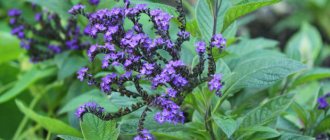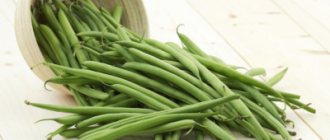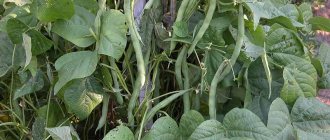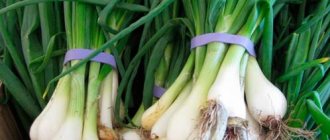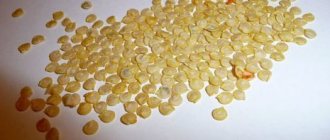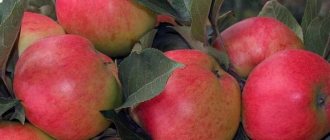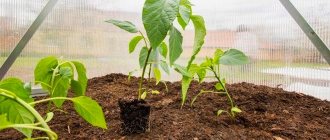Features of growing asparagus beans in open ground
There are more than 50 varieties of cowpea. Almost all species can be grown in the Russian Federation. The bush grows well in loamy and light soils. The proximity of groundwater and heavy substrates should be avoided. During 1 season, the bush is harvested about 5 times.
The main feature of cowpea is that the pods are cut before they are fully ripe. Growing a bush eliminates the use of chemicals to increase yield and shelf life. The difference between green beans and green beans is that the crop is eaten without peeling. Overripe fruits are not added to dishes, because even after heat treatment they remain hard and dry.
Choosing a landing site
Almost all cowpea varieties are very picky about the germination area. The amount of harvest that the plant can produce depends on the right choice.
Lighting
This legume grows in sunny areas; areas with a lot of shade should not be chosen. It is also necessary to pay attention to the wind, or rather the lack thereof. The crop will not burn in the open sun - the bean leaves themselves will create the shade they need.
The soil
The bush grows well on fertile, breathable soil. The soil water should not lie too deep, but the area cannot be swampy either. Acidic and clayey soil is considered a poor choice for planting.
You should not choose soil rich in nitrogen; the bush produces it itself. Oversaturation with this chemical element will negatively affect the development of cowpea. If the location is in the northern region, then it is better to plant the plant on sandy soil. This soil warms up faster and this property will benefit the beans.
Predecessors
Green beans survive well after many crops. But the best results can be achieved after nightshade and cruciferous vegetables (cabbage, eggplant, tomato, etc.).
How to choose a variety
Most often, gardening lovers, when choosing a legume crop, are guided by the following main characteristics:
- Productivity. The green bean variety must have sufficient productivity so that the labor costs of the vegetable grower are commensurate with the amount of harvest.
- Maturation of the variety. Almost all types of green beans are suitable for warm regions, but for areas with cold climates it is recommended to choose varieties with early ripening.
- Unpretentiousness. It is more effective to plant varieties of green beans in the garden that do not require special attention or care and are capable of growing in any conditions.
Climbing crops with long pods are planted not only to obtain a tasty and healthy product, but also as a spectacular ornamental plant decorating a personal plot. The culture stands out for its flexible stems, attractive flowers, which turn into pods of different colors.
A striking representative of this category of plants is Vigna japonica. Bush varieties of green beans produce small fruits; they are cultivated with other root crops to enrich the soil with nitrogen.
Preparing the bed
Preparing the soil for planting legumes begins in the autumn season. The soil is cleared of grass and dug up. To make the soil nutritious, add to it (calculation per 1 sq. m):
- 4 kg of humus;
- 1 tbsp. l. saltpeter;
- 1 tbsp. l. potassium chloride;
- 2 tbsp. l. dolomite flour;
- 1 tbsp. l. superphosphate.
In the spring, the soil is dug up again and fluffed with a rake. If the soil is viscous, then add 5 kg of river sand per 1 sq. m. m.
Before planting, the soil is disinfected with a weak solution of potassium permanganate.
Preliminary seed preparation
Planting material is processed - this is a mandatory procedure that helps prevent the occurrence of diseases, as well as improve seed germination. Processing can be done in several ways:
- Planting in wet soil. For this option, just make sure that the seed is intact and free of pests. Water the soil well and plant the seeds.
- Preliminary processing. Thanks to this method, seedlings will appear faster. Soak the seeds in hot water and keep in it for about a quarter of an hour. Then disinfect the seed material in a weak solution of potassium permanganate.
- Pre-germination. Inspect the seeds for damage or various types of deformation. Remove any trash from them. Place all the reserved beans on a damp gauze or cloth. Take another layer of material and cover future crops with it. The top layer should also be wet. In this case, the main thing is not to overdo it with moisture, otherwise the beans will rot. A day later, you can open the material and see that the seeds have formed sprouts. This means that the seed is completely ready for planting.
Cowpeas are planted in a different area each year to avoid a disease called anthracnose.
When to plant green beans
Growing beans in the middle zone and cold regions is associated with a number of difficulties. The culture is thermophilic; young shoots cannot withstand even mild short-term frosts. If the plant survives, it grows poorly and does not produce a full harvest. Beans planted in cold soil often lose their viability and rot in high humidity conditions.
There is no need to rush into planting beans. In April, vegetable seeds can be planted only in the south of Russia. Planting green beans with seeds in open ground in the middle zone is carried out in late May-early June. In regions with frequent return frosts, in the Urals and Siberia, the vegetable is sown in the soil no earlier than the first ten days of June.
When planting, weather conditions must be taken into account. The soil should warm up to +12-15 degrees, the thermometer should be at +20-25. It has been noticed that in warm weather beans sprout much faster. At +15-17, seedlings appear in two weeks, and at +20-25 - after 8 days. The plant develops well in warm weather. When the air temperature drops, the time for fruit growth and ripening lengthens.
Advice! Residents of risky farming regions are advised to buy early-growing varieties of beans or grow plants through seedlings.
Germination of seeds
Planting beans
All varieties are planted in the same way, so you should adhere to a certain planting algorithm.
Landing dates
To obtain a regular harvest, you need to plant several varieties at the same time, however, with different growing seasons. Three types of beans are planted on one ridge: early ripening, medium and late.
In early ripening bushes, the fruits can be picked already 2 months after the formation of the beans; late varieties bear fruit only after 3.5 months.
Planting is carried out only when the air temperature reaches +16 degrees Celsius, and there will be no night frosts. In almost all regions this period occurs at the end of April-beginning of May. Later planting will result in a smaller harvest.
Vigna develops quickly and takes root at an air temperature of +22 degrees Celsius.
If planting is carried out directly in open ground without prior germination, then the depth of the seeds should not be more than 4 cm. Planting too deep will slow down the growth of seedlings.
Step-by-step planting diagram
Algorithm for planting cowpea using the sprout method:
- Carefully inspect the planting material. Do not plant beans that are stained, darkened or rotted.
- Plant the sprouted sprouts in containers with soil mixture. Place a couple of beans in 1 pot at a depth of 3 cm. Pay attention to the sprouts, they should face up.
- Gently sprinkle soil over the sprouts.
- Water the seedlings with a spray bottle so that the seeds do not begin to rot, but the soil does not dry out.
- After 2 leaves appear, transplant the seedlings into open soil.
- A week before planting the plant, feed the soil. Horse manure and compost perfectly saturate the soil.
- Leave distances between plants based on bean varieties. For example, a plant between a bush or tall crop may be small.
- Plant seedlings in rows. Leave a distance of 0.4-0.5 m between them.
- If you plant beans directly into the soil, then bury them 4 cm.
Description of popular varieties and existing varieties
Green bean, or as it is sometimes called, green bean, is a climbing perennial/annual plant with feather-like leaves.
Flower development occurs in the axils. The fruits are bivalve beans, with large beans inside, between which there is a spongy-looking partition. Beans contain a large amount of protein and beneficial microelements. Beans are a plant that does not require a lot of light. 12 hours a day is enough to get a rich harvest. The big advantage of the crop is that it is capable of self-pollination, which means you can easily grow several varieties on your plot at once. And speaking of varieties. Green beans can be classified according to several criteria:
- By ripening period: early ripening (2 months), mid-early (2.5 months), middle (2.5-3 months), mid-ripening (up to one hundred days) and late (ripening period exceeds 100 days).
- According to the form of a terrestrial plant: climbing, bushy.
- According to taste characteristics and scope of use: peeling, sugar and semi-sugar.
Shelling (grain) beans
Shelling (grain) beans are cultivated for eating exclusively grains, since the outer shell is quite hard, which does not allow them to be used as food. It is best to grow such beans only in warm climates, since in the middle zone they simply will not ripen, and in this form they will simply be inedible. The most popular varieties of grain beans include:
- Ballad. This mid-season variety is not afraid of drought and contains a large amount of protein. It has green pods and light yellow grains with purple spots.
- Ruby. This variety is also mid-season. It has narrow pods containing burgundy-colored beans. Has excellent taste characteristics.
- Chocolate girl. This is a mid-late bean, the bush reaches a meter in height. The pods are long and yellow.
Green beans (sugar beans) are usually used for food almost entirely, that is, together with the pods, since they do not contain a special permanent layer, as in shelled beans. This variety is the most delicious. It also has an interesting property: removing excess fluid from the body. The most popular varieties of green beans include:
- Butter King. An early ripening variety that produces a rich harvest. It has pods with a delicate taste.
- Hell Rem. A variety with climbing bushes and beans of a pale pink color with a delicate mushroom taste.
- Crane. It has fairly compact bushes, on which fiberless pods ripen, distinguished by a delicate taste.
Green (sugar) beans
Caring for green beans
Vigna is not the most demanding crop, but in order to get an excellent harvest, it will have to be properly and regularly cared for.
Watering
Green beans need regular watering; if the owner is on the site only once a week, then he will not be able to grow a bush and get a good harvest. After direct planting, the plant is watered once every 2 days. As soon as the seedlings begin to appear, watering is reduced and carried out as needed. The best time for this event is evening or morning.
Watering is carried out directly under the root system; water should not be poured onto the leaves. Summer residents use one light solution: fill 2/3 of the barrel with weeds, add water and leave for 7 days. Then, for watering, take 1 liter of product and dilute it in 1 bucket of water.
Watering is very important for cowpeas; if there is little moisture, the stems will change shape, stop growing, and the fruits will decrease in size. When 4 leaves have formed on the bean, the bush is not watered until flowering. As soon as it blooms, watering is carried out once every 2 days.
Weeding and loosening
No other plants should grow near the beans, especially weeds. After watering, you need to weed and loosen the soil. Weeding is carried out as soon as the seedling has reached 7 cm in height, and loosening - after the sprout has grown by 10 cm.
Mulching the soil
To make maintenance easier, the soil around the root circle is mulched. It is better to use straw. Moisture will evaporate less, and weeds will not be able to grow through the mulch layer.
Support
Support is necessary only for climbing varieties of green beans. The height of such installations reaches 1.5 m. A wire or rope is attached to the top of the support - branches will cling to it. As soon as the plant sends out a curling arrow, it is directed to a support, and during the night the arrow will spin itself. You should not use a chain-link for this purpose, because it is very difficult to remove dry branches from it in the fall.
Pinching the shoot
As soon as the beans have reached 0.1 m, they are hilled. The procedure is important as it helps improve the nutrition of the bush and strengthen the root system. Pinching the top is carried out when the plant reaches a height of 2 m or more. This is done so that the bush does not grow any more, but directs all its energy to the formation of fruits.
Top dressing
Cow manure has proven itself to be an excellent fertilizer. There are 2 options for adding it:
- Combine with watering (1 part manure to 10 parts water).
- Spread the fertilizer on the mulch so that it rots.
Chemical fertilizers begin to be applied as soon as the sprouts produce their first leaves. Use superphosphate (40 g per 1 sq. m). During the formation of buds, potassium salt is added to the ground (10 g per 1 sq. m). It is impossible to add nitrogen at the flowering stage and at further stages, because it stimulates and accelerates the growth of green mass and in the future the beans may grow without a harvest.
Timing and technology of sowing
The time for planting legumes depends on the climatic conditions of a particular region. In open areas, agricultural seeds are planted in the ground only in stable warm weather, when the threat of spring return frosts has passed. In the central regions, asparagus beans are planted in the twentieth of May, and in the north - in early June. In the southern regions, sowing is done one month earlier.
If beans are planted in the ground at a late date, there is a high probability of a decrease in yield indicators.
The soil for sowing asparagus beans must be sufficiently warmed up to at least +10 degrees. Cold soil negatively affects grains, their germination rate decreases, and when they swell and at the seedling stage, putrefactive processes begin.
The technology for sowing beans consists of performing the following steps:
- Selected bean grains are awakened by soaking in warm water for the beginning of the growing season.
- The soil is moistened in advance.
- Form grooves 3-4 cm deep. The recommended distance between rows is 40-60 cm. For bush varieties, holes are made 8-10 cm apart. Climbing varieties of agriculture, on the contrary, are planted as close to each other as possible, supports are installed to them, to which rope and twine are attached.
- A handful of wood ash is placed in the holes as a fertilizer composition.
- Cover with fertile soil and irrigate.
Diseases and pests of beans
| Pests/diseases | Symptoms of the lesion | What to do? |
| Anthracnose | It appears on the cotyledons as brown spots with red pads in the center. The stem acquires dark brown stripes. The root system is rotting. Yellow spots appear on the leaves and they fall off. | Spraying the plant with Bordeaux mixture (1%). |
| Downy mildew | Yellow spots appear on stems and leaves. A gray-violet coating forms on the underside of the foliage. Affected parts of the plant rot or fall off. | Spraying the plant with Bordeaux mixture (1%). |
| Bacteriosis | The sprouts are dying. Spots and damage appear on the leaves. | Destruction of infected plants, treatment of beans with biological products. |
| Sprout fly | The grains are damaged during germination. | Treatment of plants with insecticides: “Fufanol”, “Tanrek”. |
| Slugs and snails | They eat all the green mass of the plant. | Manual pest removal. |
Harvest and storage
It is necessary to harvest the crop on time, otherwise it will become overripe and hard. If you collect it regularly, new ovaries will begin to form on the plant. The crop is not plucked en masse; the pods are inspected and the ripest ones are collected.
To harvest seeds, do not remove the pods and allow them to dry on the plant. Green beans have a short shelf life (2-3 days), so if you want to save them for the winter, freeze the crop. It is better to cut the product, put it in a bag and place it in the freezer. Grains set aside for sowing are stored in the refrigerator.
Green beans (cowpeas) are one of the best types of legumes. Caring for it will not exhaust the summer resident. You don’t need to do anything complicated, but you can enjoy a large and healthy harvest.
0
0
Copy link
